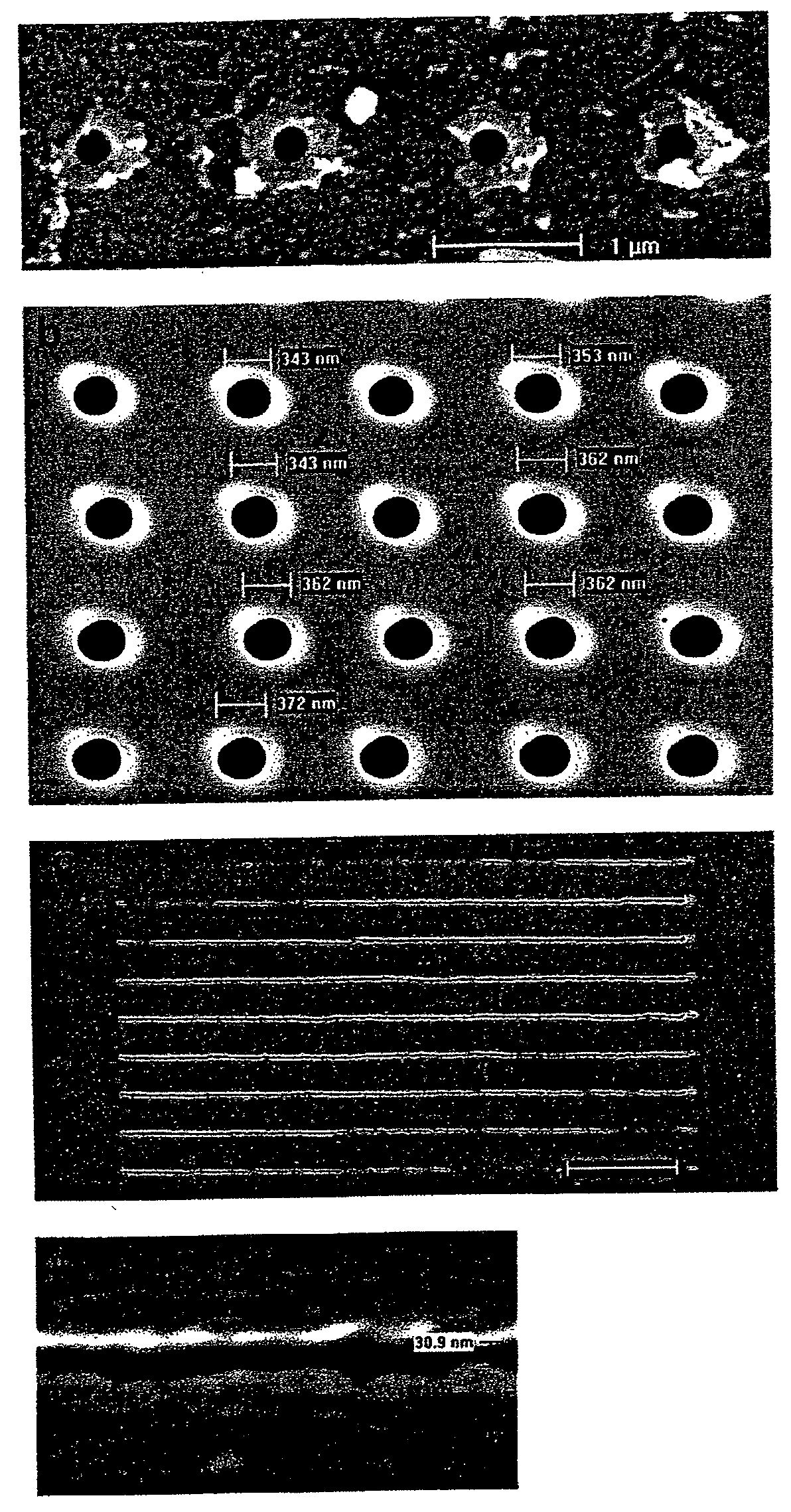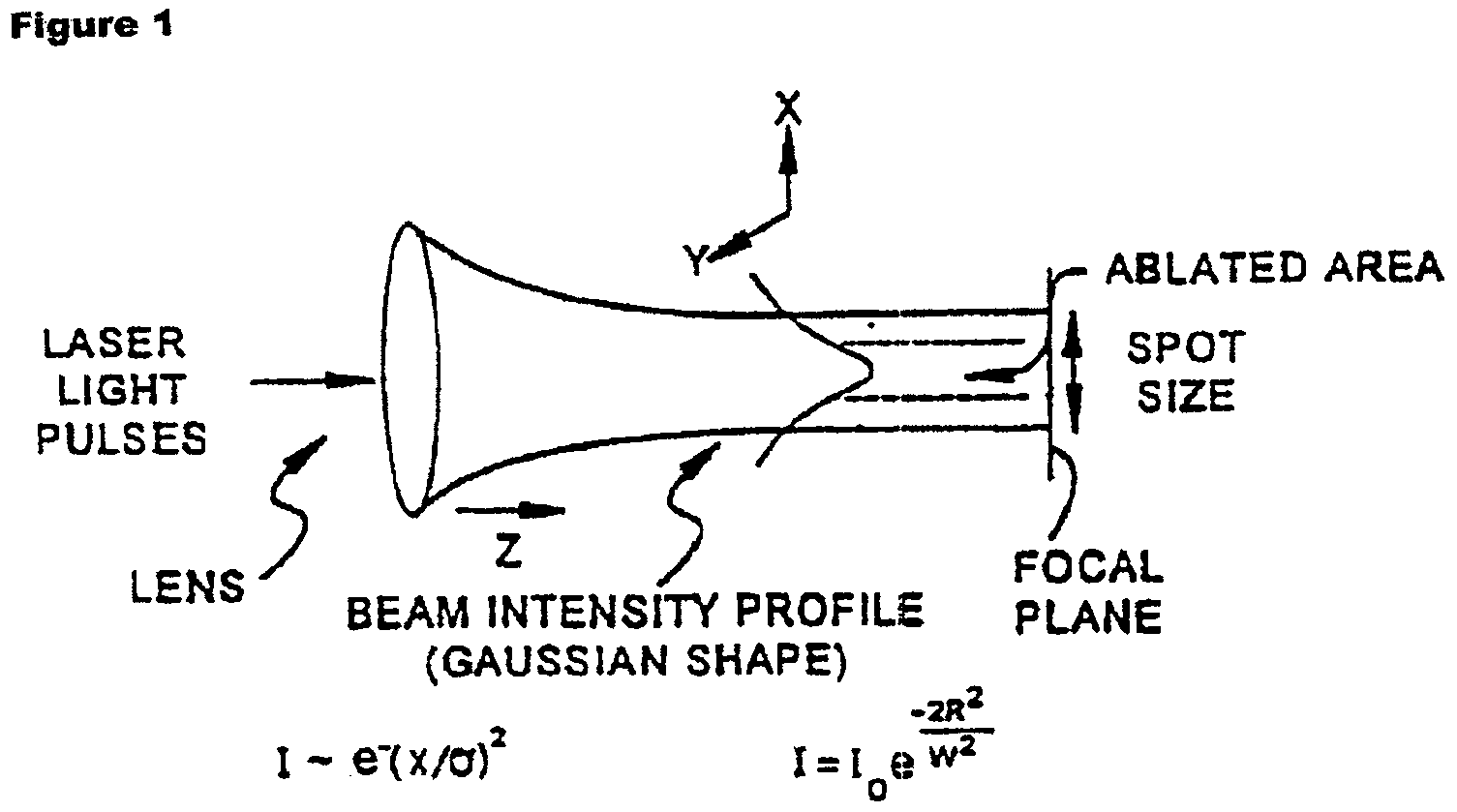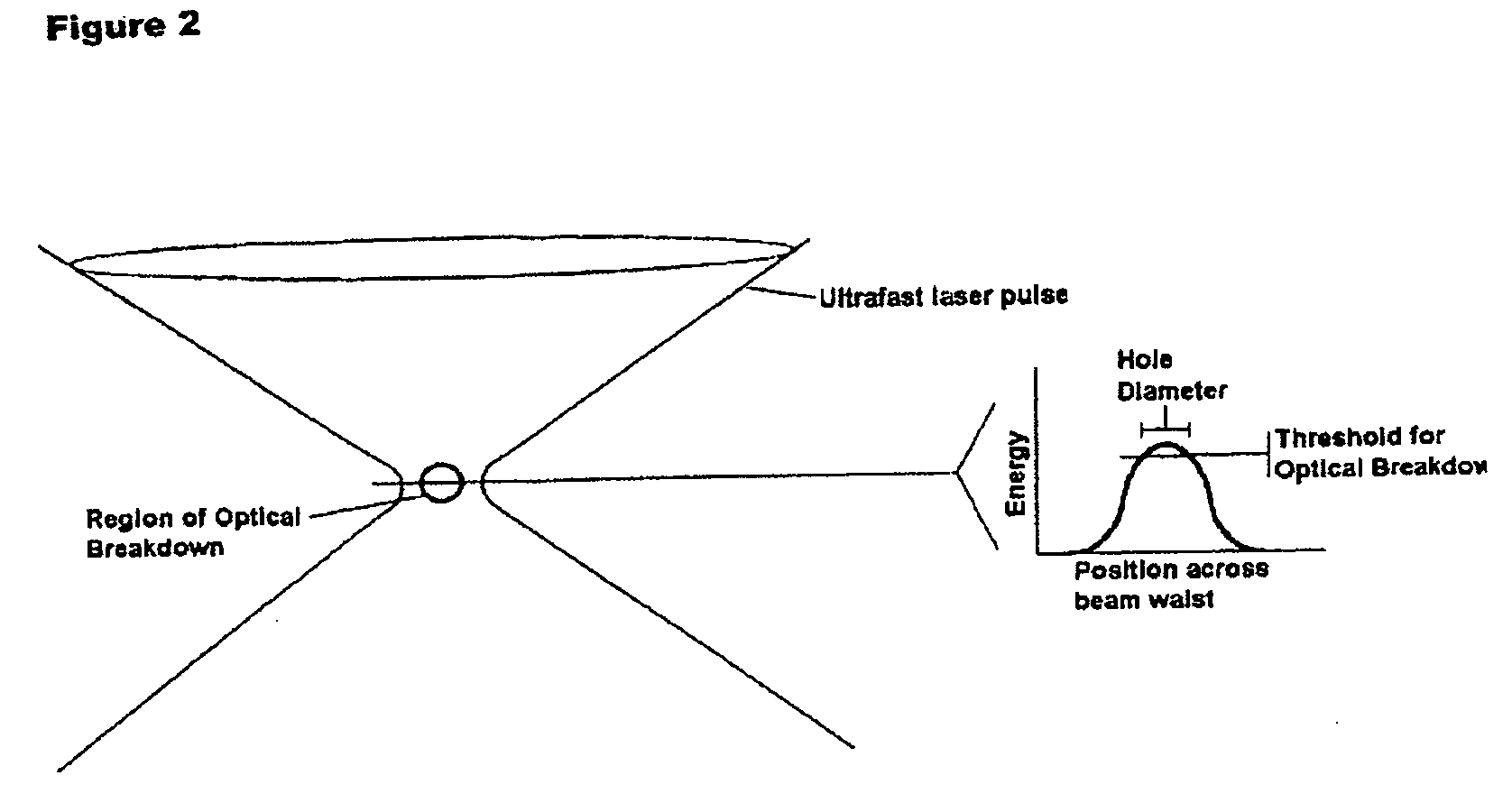Method for forming nanoscale features and structures produced thereby
a technology of features and structures, applied in the field of nanoscale features and structures produced by thereby, can solve the problems of negligible energy delivered and insignificant radiation damage beyond the optical breakdown region, and achieve the effect of reducing the size of features and significant impact in biological sciences
- Summary
- Abstract
- Description
- Claims
- Application Information
AI Technical Summary
Benefits of technology
Problems solved by technology
Method used
Image
Examples
Embodiment Construction
The following description of the preferred embodiment(s) is merely exemplary in nature and is in no way intended to limit the invention, its application, or uses.
The present invention provides a method to shape an optical pulse in space and time to achieve precise deterministic effects in smaller features heretofore not previously contemplated. See FIG. 4 of the present invention showing single spot and multiple spot patterns prepared by a single optical pulse shaped in space and time providing one or more regions of increased unbound electron density. In order to foster an understanding of the present invention developments, it is useful to understand principles associated with FIGS. 1, 2 and 3. FIGS. 1, 2 and 3 are schematic illustrations of a beam intensity profile showing that for laser micro-machining with ultrafast pulse, only the peak of the beam intensity profile exceeds the threshold intensity for ablation / machining.
FIG. 3 shows the radial and axial position on the beam...
PUM
| Property | Measurement | Unit |
|---|---|---|
| Length | aaaaa | aaaaa |
| Length | aaaaa | aaaaa |
| Length | aaaaa | aaaaa |
Abstract
Description
Claims
Application Information
 Login to View More
Login to View More - R&D
- Intellectual Property
- Life Sciences
- Materials
- Tech Scout
- Unparalleled Data Quality
- Higher Quality Content
- 60% Fewer Hallucinations
Browse by: Latest US Patents, China's latest patents, Technical Efficacy Thesaurus, Application Domain, Technology Topic, Popular Technical Reports.
© 2025 PatSnap. All rights reserved.Legal|Privacy policy|Modern Slavery Act Transparency Statement|Sitemap|About US| Contact US: help@patsnap.com



